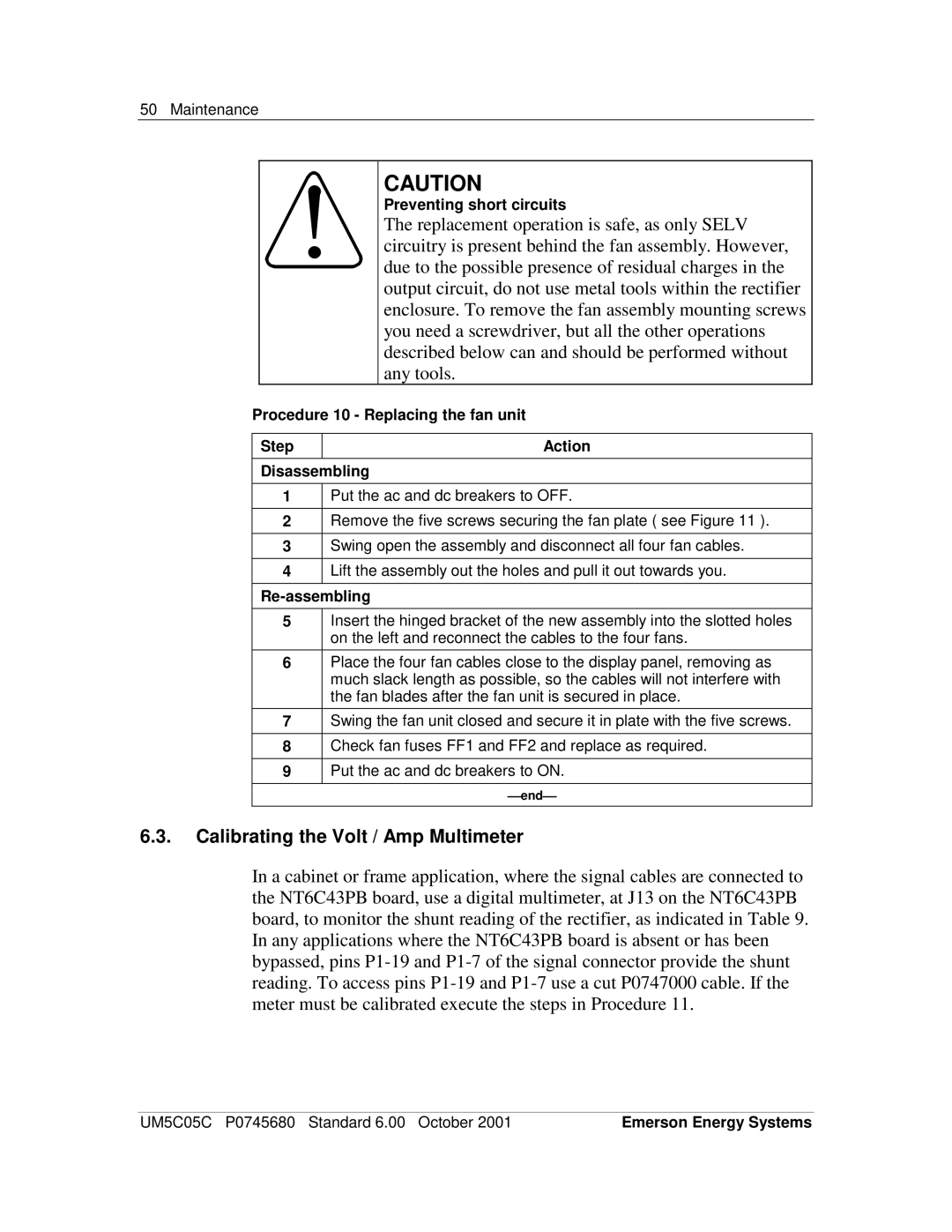
50 Maintenance
CAUTION
Preventing short circuits
The replacement operation is safe, as only SELV circuitry is present behind the fan assembly. However, due to the possible presence of residual charges in the output circuit, do not use metal tools within the rectifier enclosure. To remove the fan assembly mounting screws you need a screwdriver, but all the other operations described below can and should be performed without any tools.
Procedure 10 - Replacing the fan unit
Step |
| Action |
Disassembling |
| |
1Put the ac and dc breakers to OFF.
2Remove the five screws securing the fan plate ( see Figure 11 ).
3Swing open the assembly and disconnect all four fan cables.
4Lift the assembly out the holes and pull it out towards you.
Re-assembling
5Insert the hinged bracket of the new assembly into the slotted holes on the left and reconnect the cables to the four fans.
6Place the four fan cables close to the display panel, removing as much slack length as possible, so the cables will not interfere with the fan blades after the fan unit is secured in place.
7Swing the fan unit closed and secure it in plate with the five screws.
8Check fan fuses FF1 and FF2 and replace as required.
9Put the ac and dc breakers to ON.
end
6.3.Calibrating the Volt / Amp Multimeter
In a cabinet or frame application, where the signal cables are connected to the NT6C43PB board, use a digital multimeter, at J13 on the NT6C43PB board, to monitor the shunt reading of the rectifier, as indicated in Table 9. In any applications where the NT6C43PB board is absent or has been bypassed, pins
UM5C05C P0745680 Standard 6.00 October 2001 | Emerson Energy Systems |
